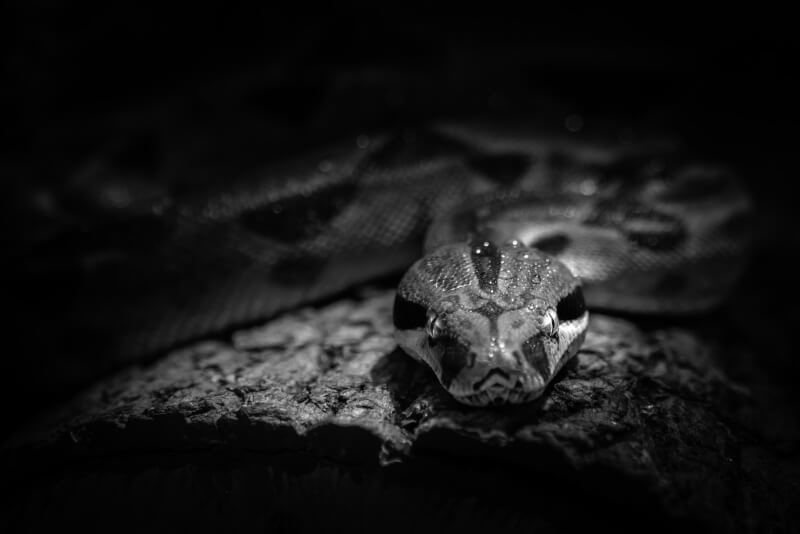Have you ever wondered if snakes can see in the dark? Well, it turns out that they possess a remarkable ability to navigate and hunt in low light conditions. While they may not have night vision like some nocturnal animals, snakes have adapted to see in the dark using a combination of special features and sensory organs. In this article, we’ll explore the fascinating world of snake vision and uncover the secrets behind their uncanny ability to thrive in darkness. So, buckle up and prepare to be amazed by the incredible visual capabilities of these slithering creatures!
Can Snakes See in the Dark?
The Vision of Snakes
Snakes are fascinating creatures known for their unique physical and sensory adaptations. One question that frequently arises is whether snakes can see in the dark. While it is true that many snake species are most active during the twilight hours or at night, their vision in the dark is quite different from that of humans or other diurnal animals.
Types of Snakes’ Eyes
Like most vertebrates, snakes have eyes that allow them to perceive their surroundings. However, the structure of snakes’ eyes is different from that of mammals. Snakes have what are known as “unblinking” eyes since they lack eyelids. Instead, their eyes are covered by a thin, transparent scale called a spectacle or brille, which acts as a protective layer.
How Snakes Perceive Darkness
While snakes cannot see in complete darkness, they do possess some ability to perceive objects in low-light conditions. Their visual system has evolved to make the most of the available light. Snakes can detect the presence of light, even when it is extremely dim, thanks to specialized sensory organs and adaptations in their eyes.
Special Adaptations for Low Light
One crucial adaptation that enables snakes to perceive light in dark environments is their enlarged pupils. Unlike humans, whose pupils dilate to allow more light to enter the eyes, snake pupils can constrict to form a tiny vertical slit. This unique shape helps to optimize their vision by reducing peripheral light and increasing the depth of field.
The Pit Organs
In addition to their unique pupils, snakes possess specialized sensory organs called pit organs. These pit organs are located on the sides of their heads and are particularly sensitive to temperature changes. These structures allow snakes to detect thermal radiation emitted by warm-blooded animals, even in total darkness. By detecting these infrared signals, snakes can accurately locate their prey, making them highly efficient nocturnal hunters.
Rods and Cones: Snake Eyes vs. Human Eyes
The structure of snakes’ retinas differs from that of humans and other mammals. While humans have a high density of cones, which are responsible for color vision, snakes have a higher density of rods, which are sensitive to low levels of light. This adaptation allows snakes to have superior night vision compared to humans. However, snakes’ ability to perceive colors is limited, and their visual acuity in bright daylight is not as sharp.
Snake Vision at Different Light Levels
It is important to note that not all snake species have the same visual capabilities in different light conditions. Some snakes, like pit vipers, have excellent night vision due to their highly sensitive pit organs. These snakes can easily detect warm-blooded prey in the dark, even from a considerable distance. On the other hand, some snake species that are active during the day may have better vision in well-lit environments but relatively poorer night vision.
Snake Vision Compared to Other Animals
While snakes have remarkable adaptations for low-light conditions, their vision is not as advanced as that of some other nocturnal animals. Nocturnal predators like owls, for instance, possess highly specialized adaptations that allow them to see in almost complete darkness. Owls have a greater number of rod cells in their retinas, enabling them to capture even the faintest traces of light. Similarly, some bats have echolocation, a unique ability that allows them to navigate and detect prey using sound waves. Snakes, while proficient in low-light environments, do not possess these highly specialized adaptations.
Snakes’ Use of Other Senses in the Dark
Although snake vision is an essential sense, it is not their only means of perceiving their environment in the dark. Snakes rely heavily on their other senses, such as their sense of touch and their highly developed sense of smell. With their specialized forked tongues, snakes can collect scent particles from the air and transfer them to their Jacobson’s organ, located in the roof of their mouth. This allows them to track prey and identify potential threats, even in the absence of sufficient light.
Conclusion
While snakes cannot see in complete darkness, they do possess remarkable adaptations that enable them to perceive their surroundings even in low-light conditions. Their unique pupils, abundant rods, and sensitive pit organs help them make the most of the available light. These adaptations, combined with their reliance on other senses, such as touch and smell, contribute to their success as both diurnal and nocturnal hunters. So the next time you encounter a snake in the twilight hours, remember that it is equipped with extraordinary visual abilities that are perfectly suited to its nocturnal lifestyle.


